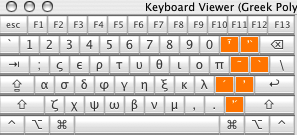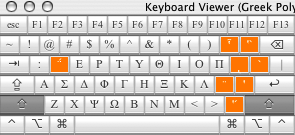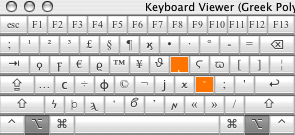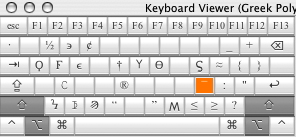Criteria for Analyzing Author's Style
Here's an example of style analyses I do when comparing portions of the New Testament. I maintain sets of grammatical/syntactical structures to search for on each section of text and then compare the results. Some of the searches are mere tallies of tenses, person, moods, cases, etc. Things like:
V1 [VERB present] V2 [VERB future] V3 [VERB imperfect] ...Note that these are in Accordance format. Other searches are structural in nature, such as
I10 [PREPOSITION] [ARTICLE] [VERB infinitive] I11 [VERB infinitive] <NOT> <PRECEDED BY> [ARTICLE] I12 ([ARTICLE] [VERB infinitive]) <OR> ([ARTICLE] [Particle] [VERB infinitive]) ...I run the searches for each set of texts (and by "I run the searches", I mean that I write an Applescript to do all the tedious work for me) and then put the results into a table. As an example, here is a taste of the results from an unpublished paper I have that compares the speeches in Acts.

In addition to collecting data for Paul's speeches, Peter's speeches and a sample of narrative in Acts, data was compiled for the whole of Acts, Luke, 1 Maccabbees and 2 Maccabbees, all for the sake of comparison. I toy around with what correlation coefficient to use, but the purposes is then to compare how similar and different sections of text are. Here are the results from the Acts paper:

One of the grand observations of the paper is that Paul's speeches and Peter's speeches are more similar to each other than they are to any other sampling of text. A perfect correlation is one that approaches 1.0 (positive or negative), and the .92 correlation between Paul and Peter is greater than either's correlation with the narrative in Acts (.89 & .88).
In addition, I look at the results for each criteria and consider any anomalies that fall outside of one standard deviation and are not so small of a sample to be statistically or practically insignificant. The ones I think are worth mention in the manuscript are easily put into charts, of course.

Some stylistic differences so clearly affirm what are expected features of different forms. The speeches have a higher number of Vocative uses; the narrative material has a higher percentage of continuative conjunctions.
But other anomalies are understood only in the context of the subject matter. Look at V29 and V30 which are [VERB first] and [VERB first singular]. Paul's speeches clearly stand out. The contain much first person, as often with the inclusive, community building "we". See how the fun stuff really begins once you've compiled the data and looked at it?
In my current work, I'm doing these types of analysis on text portions that have significance in Synoptic Problem issues (ie. Luke's Q, Matthew's Q, Mark, Reconstructed Mark, etc.).
Having layed out a sketch of the methodology, I'd like to hear suggestions for grammatical and syntactical searches to add to the list of criteria, ones that represent more features of the style of a text that are worth considering when compiling data. Here's the full list I work with right now:
V=Verbals I=Infinitive and Participles N=Nouns P=Pronouns C=Clauses and Phrases O=Particles and Other (Vicinity searches (And/OR) reflect those within same clause.) V1 [VERB present] V2 [VERB future] V3 [VERB imperfect] V4 [VERB aorist] V5 [VERB perfect] V6 [VERB pluperfect] V7 [VERB optative] V8 [VERB imperative] V9 [VERB second imperative] V10 [VERB third imperative] V11 [VERB aorist imperative] V12 [VERB subjunctive] V13 [VERB second subjunctive] V14 [VERB subjunctive] <NOT> ean V15 [VERB middle] V16 [VERB present middle] V17 [VERB future middle] V18 [VERB imperfect middle] V19 [VERB aorist middle] V20 [VERB perfect middle] V21 [VERB pluperfect middle] V22 [VERB passive] V23 [VERB present passive] V24 [VERB future passive] V25 [VERB imperfect passive] V26 [VERB aorist passive] V27 [VERB perfect passive] V28 [VERB pluperfect passive] V29 [VERB first] V30 [VERB first singular] V31 [VERB first plural] V32 [VERB first present] V33 [VERB first future] V34 [VERB first imperfect] V35 [VERB first aorist] V36 [VERB first perfect] V37 [VERB first pluperfect] V38 [VERB second] V39 [VERB second singular] V40 [VERB second plural] I1 [VERB participle] I2 [VERB future participle] I3 [VERB aorist participle] I4 [VERB present participle] I5 [VERB perfect participle] I6 [VERB passive participle] I7 [VERB aorist passive participle] I8 [VERB infinitive] I9 [VERB future infinitive] I10 [PREPOSITION] [ARTICLE] [VERB infinitive] I11 [VERB infinitive] <NOT> <PRECEDED BY> [ARTICLE] I12 ([ARTICLE] [VERB infinitive]) <OR> ([ARTICLE] [Particle] [VERB infinitive]) I13 [ARTICLE] [VERB participle] I14 [VERB participle] [ARTICLE] I15 [VERB participle] <NOT> <PRECEDED BY> [ARTICLE] I16 eimi <FOLLOWED BY> <WITHIN 3 Words> [VERB participle nominative] <NOT> [ARTICLE nominative] N1 [NOUN nominative] N2 [NOUN genitive] N3 [NOUN dative] N4 [NOUN accusative] N5 [NOUN] [NOUN] N6 kai [NOUN] N7 (kai [NOUN nominative]) <PRECEDED BY> <WITHIN 3 Words> [ARTICLE nominative] N8 (kai [NOUN genitive]) <PRECEDED BY> <WITHIN 3 Words> [ARTICLE genitive] N9 (kai [NOUN dative]) <PRECEDED BY> <WITHIN 3 Words> [ARTICLE dative] N10 (kai [NOUN accusative]) <PRECEDED BY> <WITHIN 3 Words> [ARTICLE accusative] N11 [NOUN vocative] N12 [INTERJECTION] [NOUN vocative] N13 [NOUN singular vocative] N14 "*e"@[NOUN vocative] N15 [NOUN vocative] [NOUN vocative] N16 "andres"@[NOUN vocative] N17 "andres adelfoi" N18 "andres" [NOUN vocative] P1 [PRONOUN] P2 [PRONOUN correlative] P3 [PRONOUN demonstrative adjectival] P4 [PRONOUN demonstrative substantival] P5 [PRONOUN indefinite] P6 [PRONOUN interrogative] P7 [PRONOUN possessive] P8 [PRONOUN reflexive] P9 [PRONOUN relative] P10 [PRONOUN personal intensive] P11 [PRONOUN personal] P12 [PRONOUN personal first] P13 [PRONOUN personal first singular] P14 [PRONOUN personal first plural] P15 [PRONOUN personal second] P16 [PRONOUN personal second singular] P17 [PRONOUN personal second plural] P18 [PRONOUN personal third] C1 ei <FOLLOWED BY> [VERB indicative] C2 ei <FOLLOWED BY> [VERB optative] C3 ean C4 [PREPOSITION genitive] C5 [PREPOSITION dative] C6 [PREPOSITION accusative] C7 [PREPOSITION] (men, de, gar, oun) C8 [PREPOSITION] <Within 2> [NOUN] (men,de,gar,oun) C9 [VERB passive] <AND> upo C10 [VERB passive] <NOT> upo C11 en C12 eis C13 ek C14 epi C15 pros C16 dia C17 apo C18 kata C19 meta C20 peri C21 upo C22 para C23 uper C24 sun C25 pro C26 anti C27 ana C28 [IMPROPERPREPOSITION] O1 de O2 kai O3 men O4 te O5 [CONJUNCTION continuative] O6 [CONJUNCTION correlative] O7 [CONJUNCTION disjunctive] O8 [CONJUNCTION interrogative] O9 [CONJUNCTION copulative] O10 [CONJUNCTION inferential] O11 [CONJUNCTION explanatory] O12 [CONJUNCTION adversative] O13 [CONJUNCTION causal] O14 [CONJUNCTION conditional] O15 [CONJUNCTION locational] O16 [CONJUNCTION nominal] O17 [CONJUNCTION comparative] O18 [CONJUNCTION result] O19 [CONJUNCTION concessive] O20 [CONJUNCTION temporal] O21 [PARTICLE] O22 [PARTICLE alternating] O23 [PARTICLE indefinite] O24 [PARTICLE interrogative] O25 [PARTICLE emphatic] O26 [PARTICLE negative] O27 [PARTICLE comparative] O28 [PARTICLE subjective] O29 [PARTICLE modal] O30 "idou" O31 [ADVERB] O32 [ADJECTIVE]



 It looks like the keys are mapped close to the Greek national keyboard, including:
It looks like the keys are mapped close to the Greek national keyboard, including:

